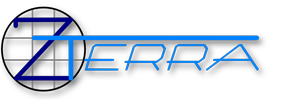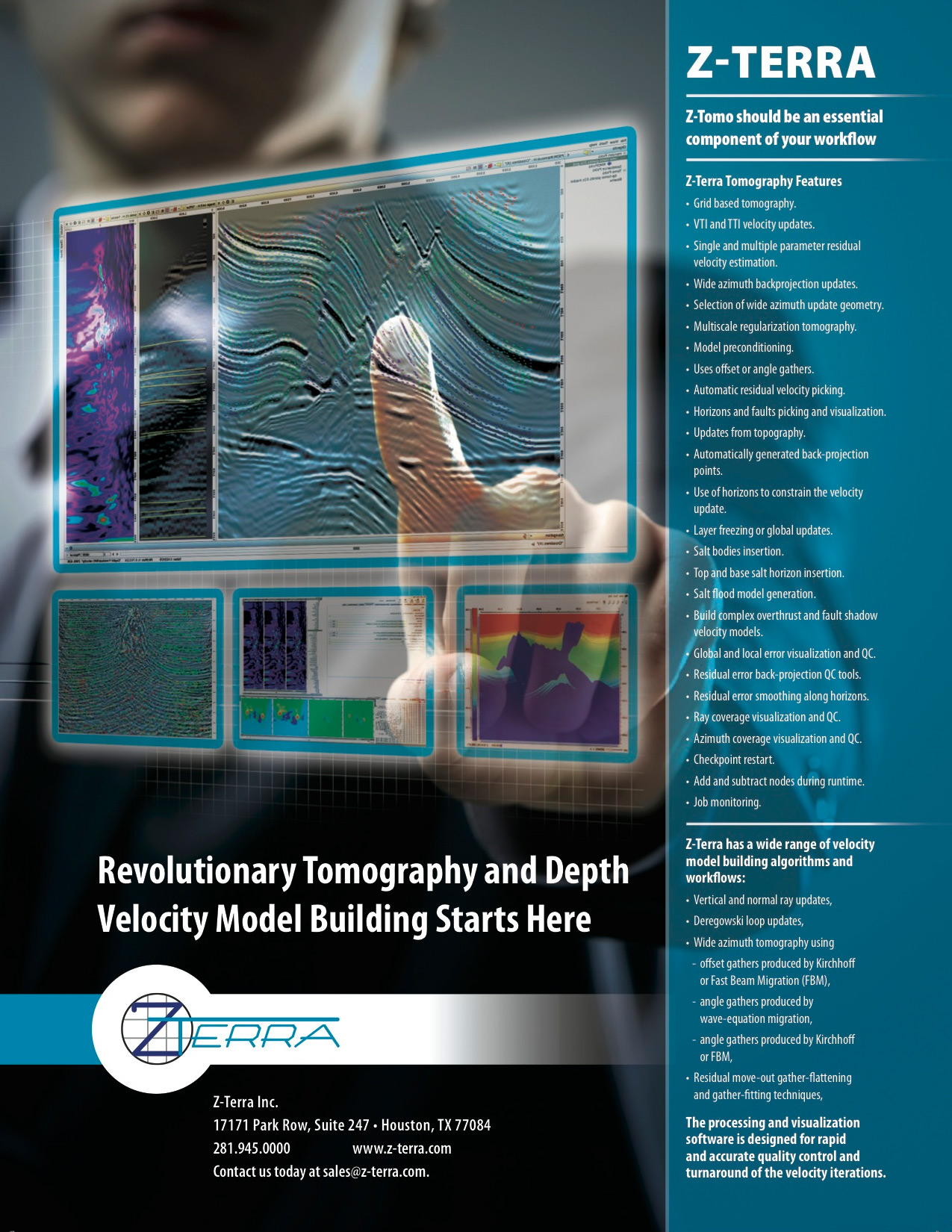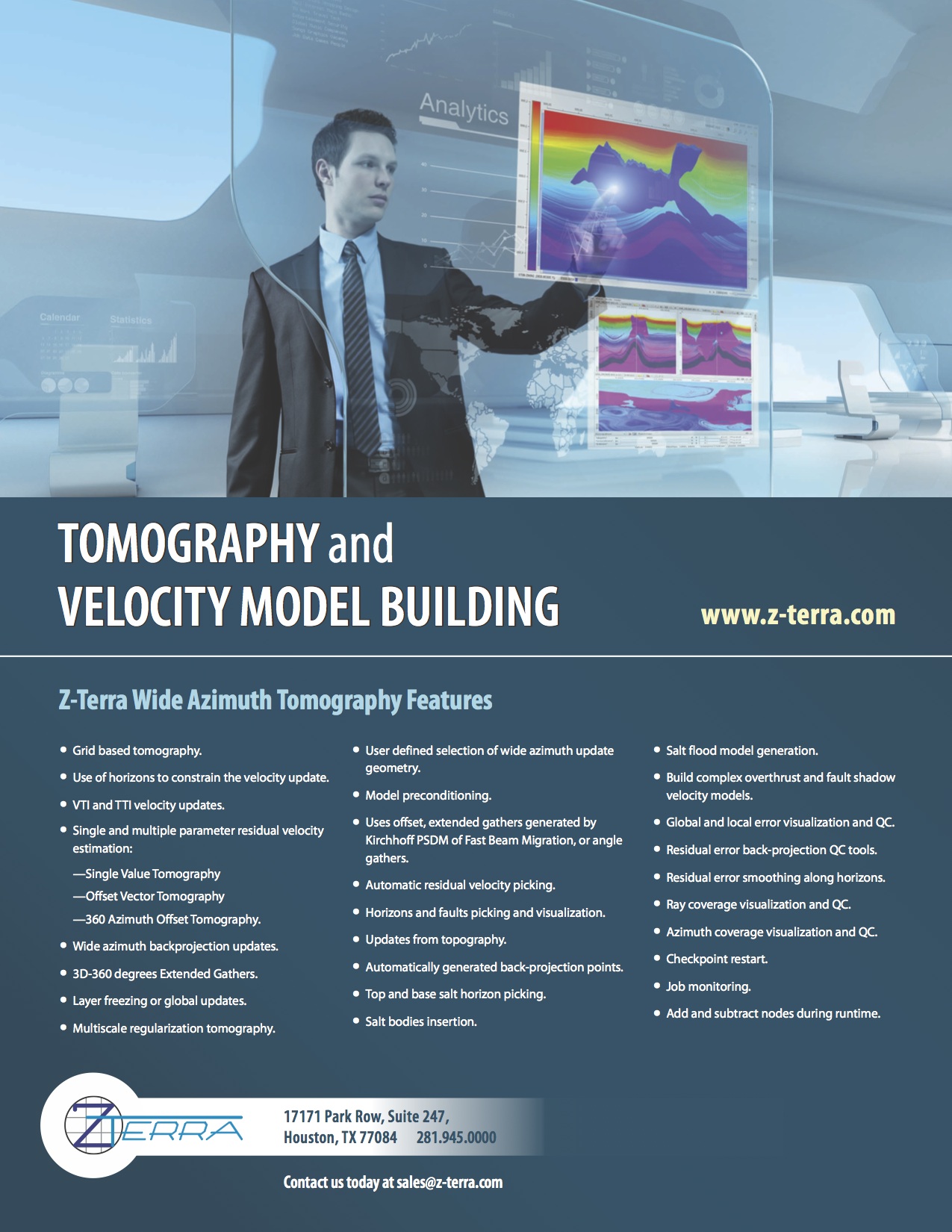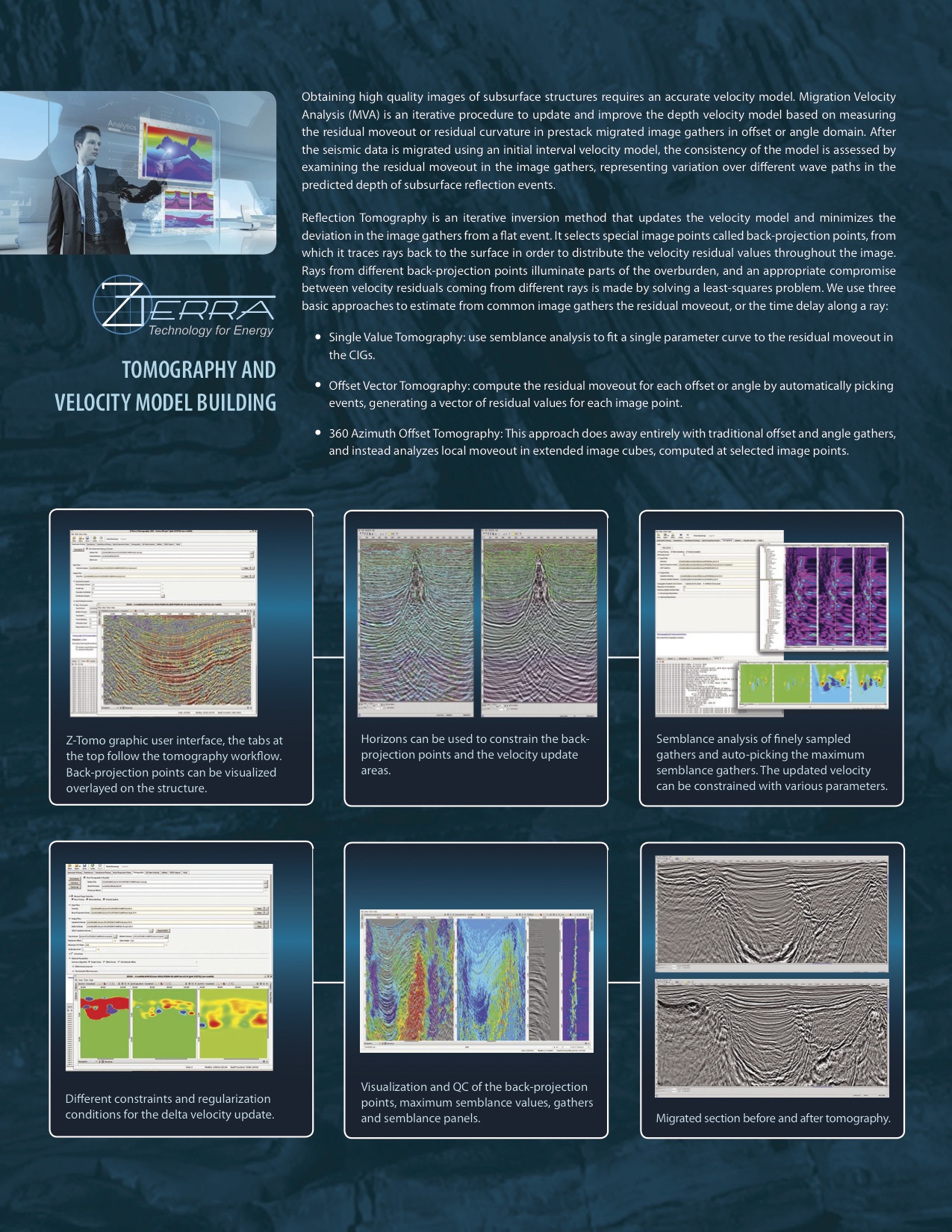
|
Before and After Z-Tomo Tomography
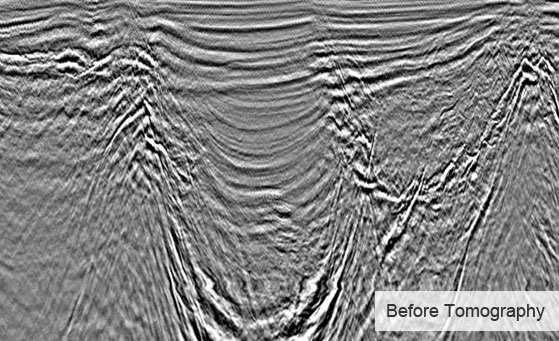
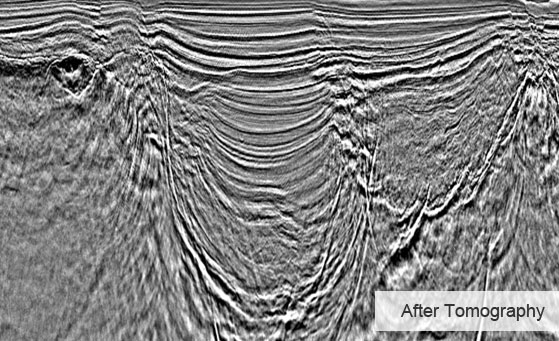
With its revolutionary tomography and depth velocity model building, Z-Tomo should be an essential component of your workflow.
- Grid based tomography
- Horizon-constrained velocity updates
- VTI and TTI velocity updates
- Single and multiple parameter residual velocity estimation:
- Single Value Tomography
- Offset Vector Tomography
- 360 Azimuth Offset Tomography
- Wide azimuth back-projection updates
- 3D-360 degree Extended Gathers
- Layer freezing or global updates
- Multiscale regularization tomography
- User defined selection of wide azimuth update geometry
- Model preconditioning
- Input offset, extended gathers generated by Kirchhoff PSDM of Fast Beam Migration, or angle gathers
- Automatic residual velocity picking
- Horizon and fault picking and visualization
- Topographic updates
- Automatically generated back-projection points
- Top and base of salt horizon picking
- Salt body insertion
- Salt flood model generation
- Build complex overthrust and fault shadow velocity models
- Global and local error visualization and QC
- Residual error back-projection QC tools
- Residual error smoothing along horizons
- Ray coverage visualization and QC
- Azimuth coverage visualization and QC
- Checkpoint restart
- Job monitoring
- Nodes addition or removal during runtime
The processing and visualization software is designed for rapid and accurate quality control and turnaround of the velocity update iterations.
- 64-bit, for x64-86 architecture processors (also known as x64, x64_86, AMD64, EMT64T, Intel 64)
- Red Hat® Enterprise Linux® (or compatible) 4.8 and above, 5.3 and above, 6.0 and above
